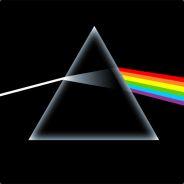Well this put my design in a bit of jeopardy, not because it was wrong or wouldn't work, but just because it might be unnecessary, which would make it kinda silly.
And for a 64 LED circuit, its actually a bit overkill. Because I could hook up four 4x16 demux's and address them just fine with only 16 pins. But if I wanted anything more than 64, I would be out of luck. Since I have had plans for larger arrays all along, this made me feel a bit better about my design. But to make my self feel even better, I made my self a bunch of graphs on how my design is superior to straight demultiplexing :P

(Efficiency in terms of LEDs per Input Pins increases as you add more pins)

So, being softly reassured by my graphs, I turned my attention to the build.
I still needed quite a few things to manufacture the circuit board. I needed a way to drill the holes in the board. I needed a way to get the circuit design onto the board precisely, and so on. So I did some research and bought some tools! (Who doesn't love power tools!!)

I had read that high RPMs (around 30,000) was key to getting clean precise holes on your boards, and the Dremel 4000 has variable RPM control that can go up to 35,000 RPMs, so I should be good :D
Also, the printable Acid Resist allows me to design my circuit on the computer, and just print it out, and apply it to the board, very precisely, so that's nice.
For drill bits, all the reading I did mentioned that I would need Solid Carbide Drill bits to really drill precision holes, but they were $5 a bit! So after some quick searching I found a few on E-Bay selling military surplus ones for mmuucchh cheaper:

With all my new tools, I finally got around to designing the actual circuit board. And wow... I under estimated this. It was not trivial. And it's still not perfect.
First thing is, I have these two 3"x5" blank PCBs that I want to use as practice before I etch the much larger 9"x12" blank that I have. So I wanted to design a paired down version of the circuit that would fit on the smaller one. So here it is. This is the actual circuit, but it only has half the outputs that the final one will have (32 instead of 64, there will be two more 4x16 demux's in the final one). And on this one I have all the LED leads on the edge of the board since this is only for testing purposes:

Well that's all from me for a bit. On Wednesday I'm heading to Belize for a week! Gonna romp around in the jungle for a few days :P


I'll be very interested to see how your PCB turns out for a DIY effort. I hear good things about the toner transfer method, but using proper printable resist should be a bit more reliable. Did you route the board yourself or use an auto router (I'm guessing the former)? What software did you use? I tend to use DipTrace, as its schematic editor doesn't annoy me too much – its auto router seems quite competent.
The red tracks in your PCB design seem quite thin, whereas I generally go for thick traces (like the green ones) when doing it myself for reliability. Etching a two-layer board yourself makes you a braver man than me, good luck getting the alignment correct. [wink] Leaving (disconneted) copper islands between tracks will result in less copper that needs to be etched and may therefore prolong the life of your chemicals.
You're not wrong about tungsten carbide bits being expensive. A small pack of ten cutters would set me back £35. [sad]